Peeling the tape off without damaging the underlying paper is an art that requires finesse and careful technique.
Whether you’re working on a delicate art project or simply removing tape from a cherished document, knowing the right approach is crucial.
This guide offers a comprehensive set of strategies and tips to ensure a seamless tape removal process.
From selecting the appropriate tape to using heat or gentle scraping methods, each step is designed to safeguard the integrity of the paper.
By following these instructions, you’ll master the skill of tape removal, preserving your valuable materials, and preventing any unsightly tears or damage.
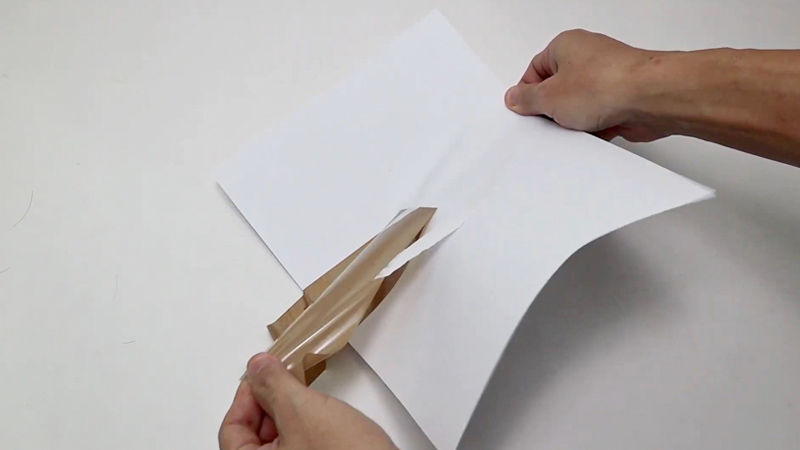
How to Peel Tape Off Without Ripping Paper?
Peeling the tape off without ripping the paper underneath requires a bit of patience and a gentle touch.
Here are some steps you can follow to achieve this:
Go Slowly
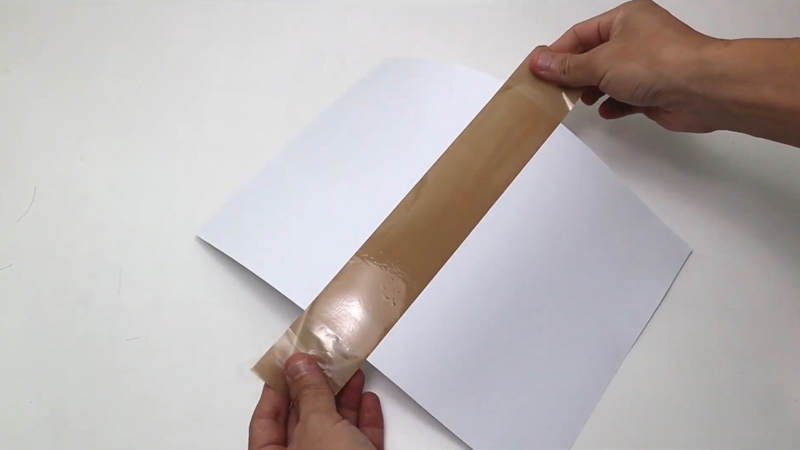
Begin the process by locating an edge or corner of the tape. Take your time to assess the situation. Ensure that you have a firm but gentle grip on the tape.
Starting at this edge, initiate the peeling process with a slow and controlled motion. Remember, patience is paramount here. Avoid any abrupt or jerky movements, as they can significantly increase the risk of tearing.
Angle Matters
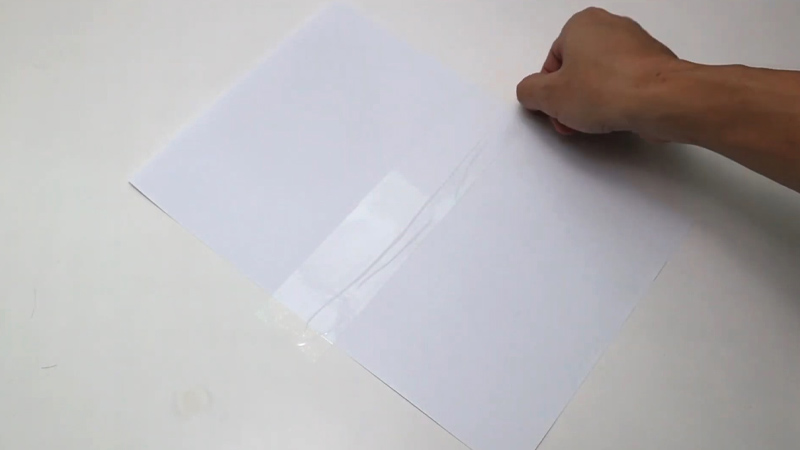
Maintaining the tape as close to the surface as possible is crucial. Aim for a low angle, almost parallel to the surface. This minimizes the amount of stress applied to the paper.
If at any point you notice the tape beginning to lift off unevenly, take a moment to adjust the angle to ensure an even peel.
Warm it Up
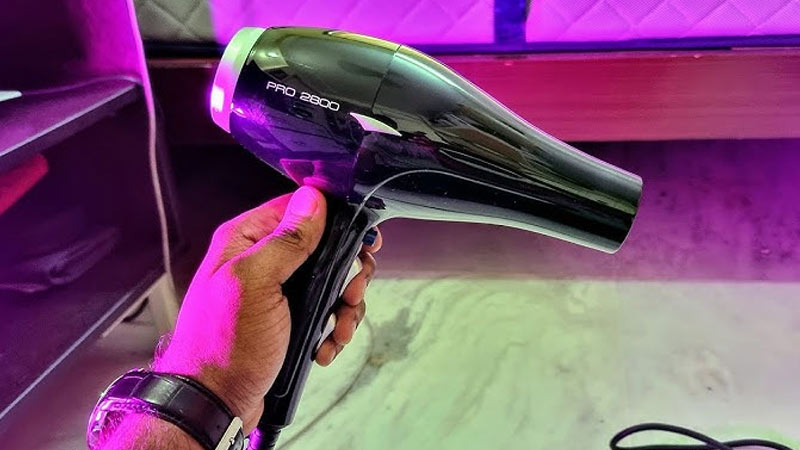
If you suspect that the tape might be particularly stubborn due to factors such as age or cold conditions, consider employing a hairdryer.
Set the hairdryer to a low heat setting and gently warm the tape as you peel it.
The application of heat helps soften the adhesive, making it more pliable and thus easier to remove without damaging the paper.
Use a Blade
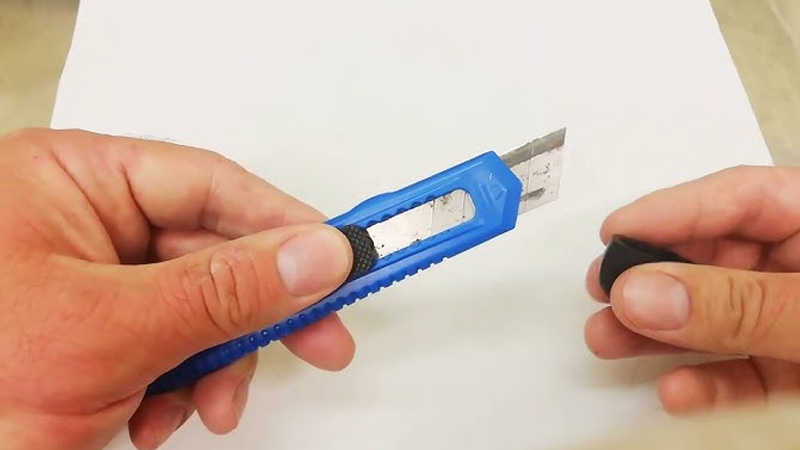
Reserve this technique for situations where the tape proves exceptionally resistant to peeling. Carefully introduce a thin, sharp blade or knife under the edge of the tape.
Lift the tape gradually and delicately, taking extra care to ensure you do not cut into the paper beneath.
Use Solvents
Certain types of adhesive may respond well to the application of solvents like rubbing alcohol. Apply a small amount of the solvent to a cloth or cotton swab.
Gently dab at the tape’s edge to soften the adhesive. Prior to widespread application, always conduct a test on an inconspicuous area to guarantee it won’t adversely affect the surface.
Roll it Off
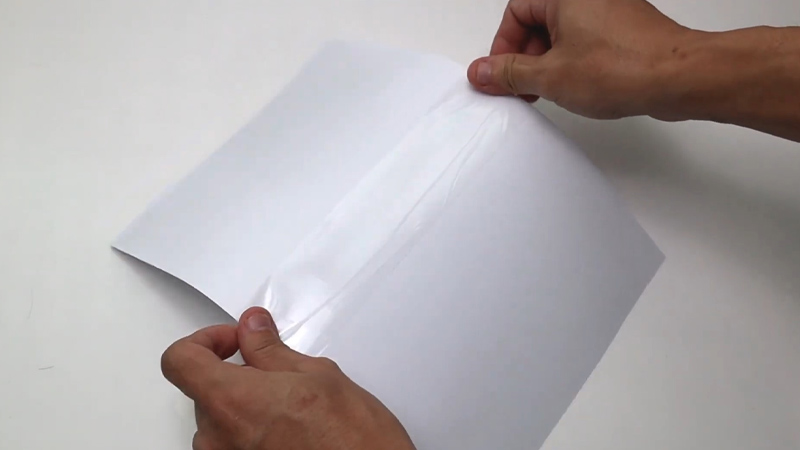
When dealing with masking or painter’s tape, consider adopting the rolling technique. Instead of pulling the tape straight back, roll it off at a slight angle.
This approach notably diminishes the likelihood of tearing and contributes to a smoother removal process.
Patience is Key
Should you encounter any resistance or observe signs of tearing, take a moment to pause and reassess your approach.
Excessive force should be avoided at all costs, as it can exacerbate the situation. Adjust your technique as necessary, ensuring that you continue to peel slowly and steadily.
Clean Up Residue
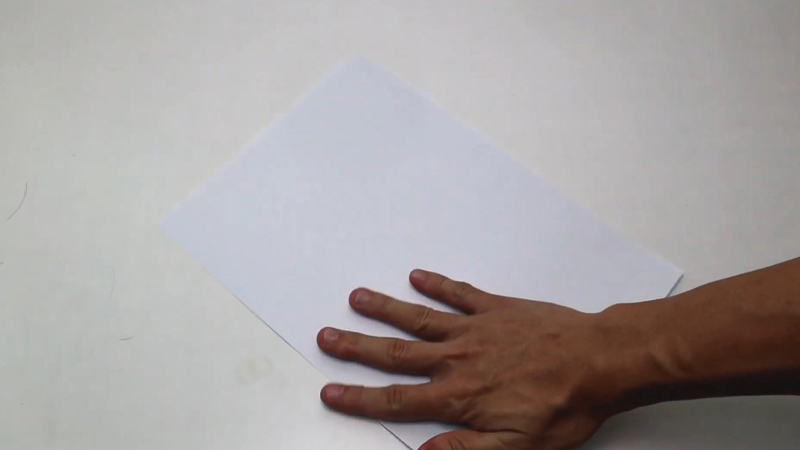
Post-tape removal, there may be remnants of adhesive left on the surface.
To address this, employ a gentle adhesive remover or rubbing alcohol on a cloth. Gently rub the residue until it lifts, and then wipe the area clean.
How Do You Remove Dried Tape?
Removing dried tape can be a bit more challenging than removing fresh tape, but it’s still possible with the right approach.
Here’s how to remove dried tape from various surfaces:
Gather Your Supplies
You’ll need a few supplies to tackle dried tape:
- A hairdryer or heat gun (for some surfaces)
- A plastic scraper or a credit card
- Rubbing alcohol or adhesive remover
- A clean cloth or paper towels
Heat it Up
If the surface allows for it (such as glass, plastic, or metal), use a hairdryer or heat gun on a low to medium setting to gently heat the tape.
Hold it a few inches away from the tape, moving it back and forth. Heat softens the adhesive, making it easier to remove.
Scrape Gently
After heating (if applicable), use a plastic scraper or an old credit card to gently lift the edge of the dried tape. Be cautious not to scratch or damage the underlying surface.
Work slowly and gently, applying steady pressure. If you encounter resistance, apply more heat or move to the next step.
Apply Rubbing Alcohol
If the tape isn’t coming off easily, apply a small amount of adhesive remover or rubbing alcohol to a clean cloth or paper towel.
Gently rub the cloth over the area with the dried tape. This will help dissolve the adhesive and make it easier to remove.
Continue Scraping
After applying the adhesive remover or rubbing alcohol, continue to scrape the tape gently. It should start to come off more easily as the adhesive breaks down.
If you encounter any stubborn spots, reapply the adhesive remover or rubbing alcohol and continue scraping.
Wipe Clean
Once you’ve removed all of the dried tape and adhesive residue, wipe the area clean with a clean cloth or paper towel.
Inspect the surface to ensure that all traces of tape and adhesive have been removed.
Final Clean-Up
If there’s still some residue remaining, you may need to repeat the process or use a specialized adhesive remover.
For surfaces like glass or stainless steel, you can also use a glass cleaner or stainless steel cleaner to give it a final polish.
Inspect and Touch-Up
After removing the dried tape, inspect the surface for any damage or discoloration. Depending on the material, you may need to perform some touch-up work, such as repainting or refinishing.
Tips and Tricks on How to Peel Tape off Without Ripping Paper
To prevent the paper from ripping when you peel off the tape in the future, follow these proactive measures:
Use Low-Tack Tape
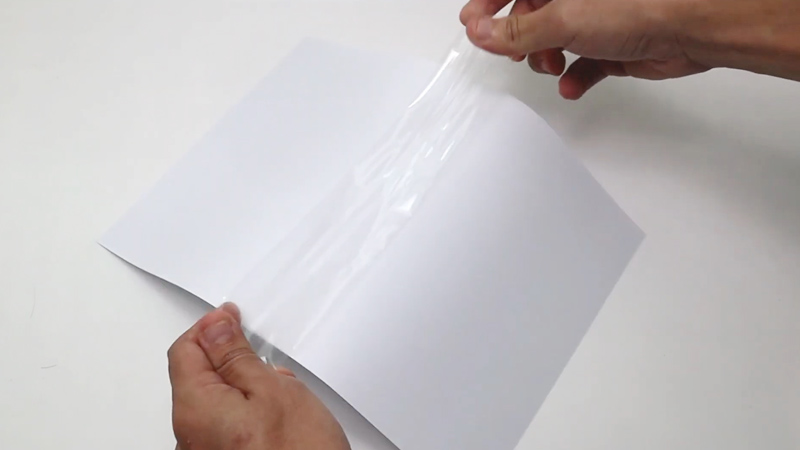
Low-tack or painter’s tape is designed to have a less aggressive adhesive, making it an excellent choice when you need to ensure that the tape can be removed without damaging the paper.
Consider using it, especially when working on delicate surfaces.
Test in an Inconspicuous Area
Prior to applying tape, always perform a small test in a hidden or inconspicuous area of the paper or surface.
This will help you gauge the tape’s adhesion strength and ease of removal, as well as whether it leaves any residue or causes any damage.
Avoid Leaving Tape for Extended Periods
Whenever possible, avoid leaving the tape on for longer than necessary. Over time, tape adhesives can bond more firmly with the paper, making removal more challenging.
Plan your work so that you can remove the tape promptly once it’s no longer needed.
Use a Back-and-Forth Motion
When peeling off tape, adopt a gentle back-and-forth motion rather than a straight pull.
This approach distributes any stress or tension more evenly across the tape and reduces the risk of tearing or damaging the paper.
Create a Pull Tab
Before applying the tape, fold over a small section of it at the end to create a pull tab.
This tab makes it easier to grip and initiate the removal process, reducing the likelihood of accidentally tearing the paper.
Apply Heat
When working with surfaces like plastic, glass, or even some types of paper, consider using a hairdryer on a low heat setting.
Gently warm the tape while peeling it to soften the adhesive. This helps the tape come off more smoothly without damaging the paper.
Use Dental Floss
For surfaces that may be sensitive to scraping, like painted walls or glass, slide dental floss or fishing line behind the tape.
Then, gently saw it back and forth to gradually release the adhesive grip without causing damage.
Lift and Stretch Technique
Instead of pulling the tape straight back, experiment with a gentle lifting and stretching motion.
Angle the tape downward and pull it in a direction that stretches it slightly. This technique can help release the adhesive’s hold with less risk of tearing.
Apply a Little Moisture
On surfaces that can handle some moisture, like glass or plastic, you can lightly dampen a cloth or sponge and apply it to the tape.
This can soften the adhesive and facilitate easier removal. Be cautious and use minimal moisture to avoid paper damage.
Use a Plastic Putty Knife
When tape is firmly stuck and resistant to other removal methods, a plastic putty knife can be a helpful tool.
Slide it gently under the edge of the tape and lift it slowly to separate the tape from the paper without causing harm.
Have Patience and Take Breaks
In challenging situations, patience is your best ally. Don’t rush the process; take your time and adjust your technique if needed. It’s better to progress slowly than risk tearing the paper.
Clean Residue Promptly
If adhesive residue remains after tape removal, address it promptly. Use an appropriate adhesive remover or rubbing alcohol to clean it off.
The longer the residue sits, the more likely it is to bond further with the surface, making removal more difficult.
FAQS
Can any type of tape be safely removed from paper without causing damage?
While it’s possible to remove most types of tape from paper, low-tack or painter’s tape is the safest choice. These have less aggressive adhesives, reducing the risk of damage.
Is it necessary to apply heat when removing tape from paper?
Applying heat, using a hairdryer on a low setting, can be helpful, especially for certain surfaces. It softens the adhesive, making tape removal easier. However, it’s not always required.
What should I do if the tape is particularly stubborn and doesn’t come off easily?
If tape is resistant, consider using a plastic putty knife to gently lift an edge. Alternatively, try applying a small amount of adhesive remover or rubbing alcohol.
Can I use water to aid in tape removal from paper?
While a small amount of moisture can sometimes soften the adhesive, it’s essential to be cautious. This method is best suited for surfaces that can handle some moisture, like plastic or glass.
How can I minimize the risk of ripping paper when removing tape?
To prevent paper damage, use a back-and-forth motion when peeling off tape, create a pull tab for better grip, and exercise patience.
To Wrap Up
Mastering the art of tape removal without damaging paper is a valuable skill. With the right techniques and tools, you can safeguard your cherished documents, artworks, and photos.
Remember to choose low-tack tape when possible and employ methods like gentle scraping, using heat, or applying moisture for stubborn adhesives.
Creating a pull tab and lifting the tape at a low angle also prove effective. Patience and caution are key.
By following these steps, you’ll confidently navigate tape removal, preserving the integrity of your materials.
With practice, you’ll peel the tape off effortlessly, ensuring your papers remain intact and unblemished for years to come.
Leave a Reply